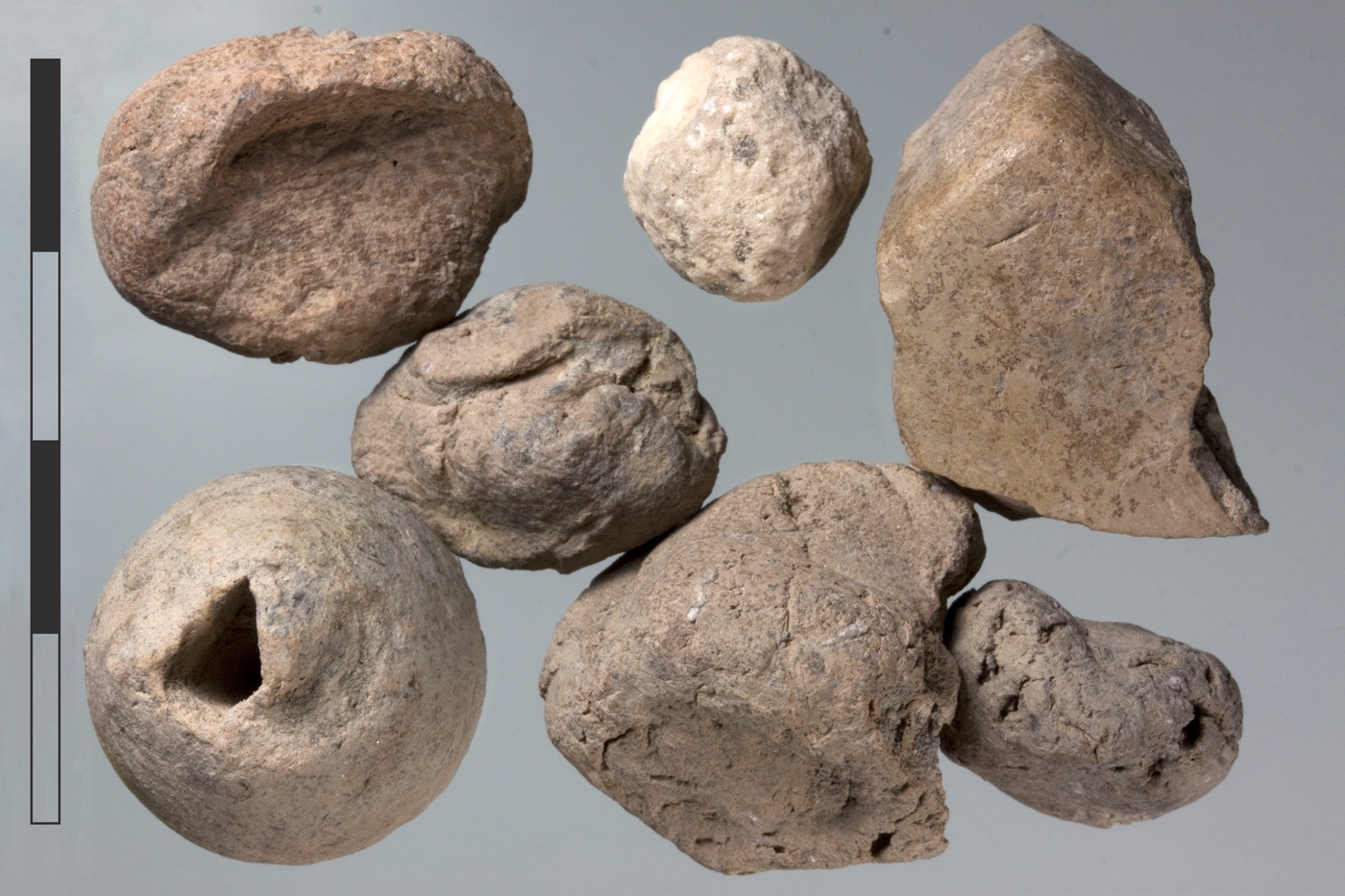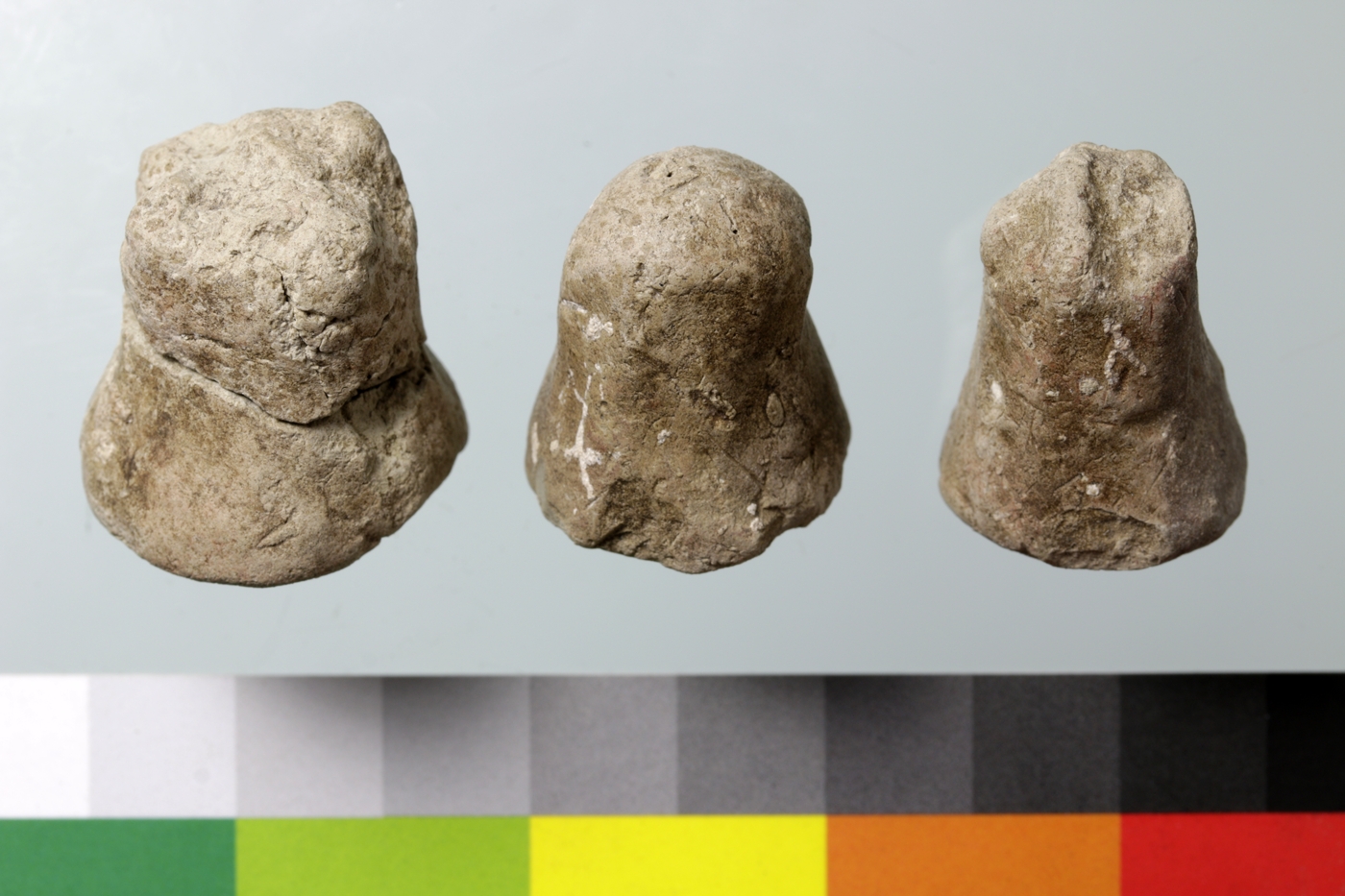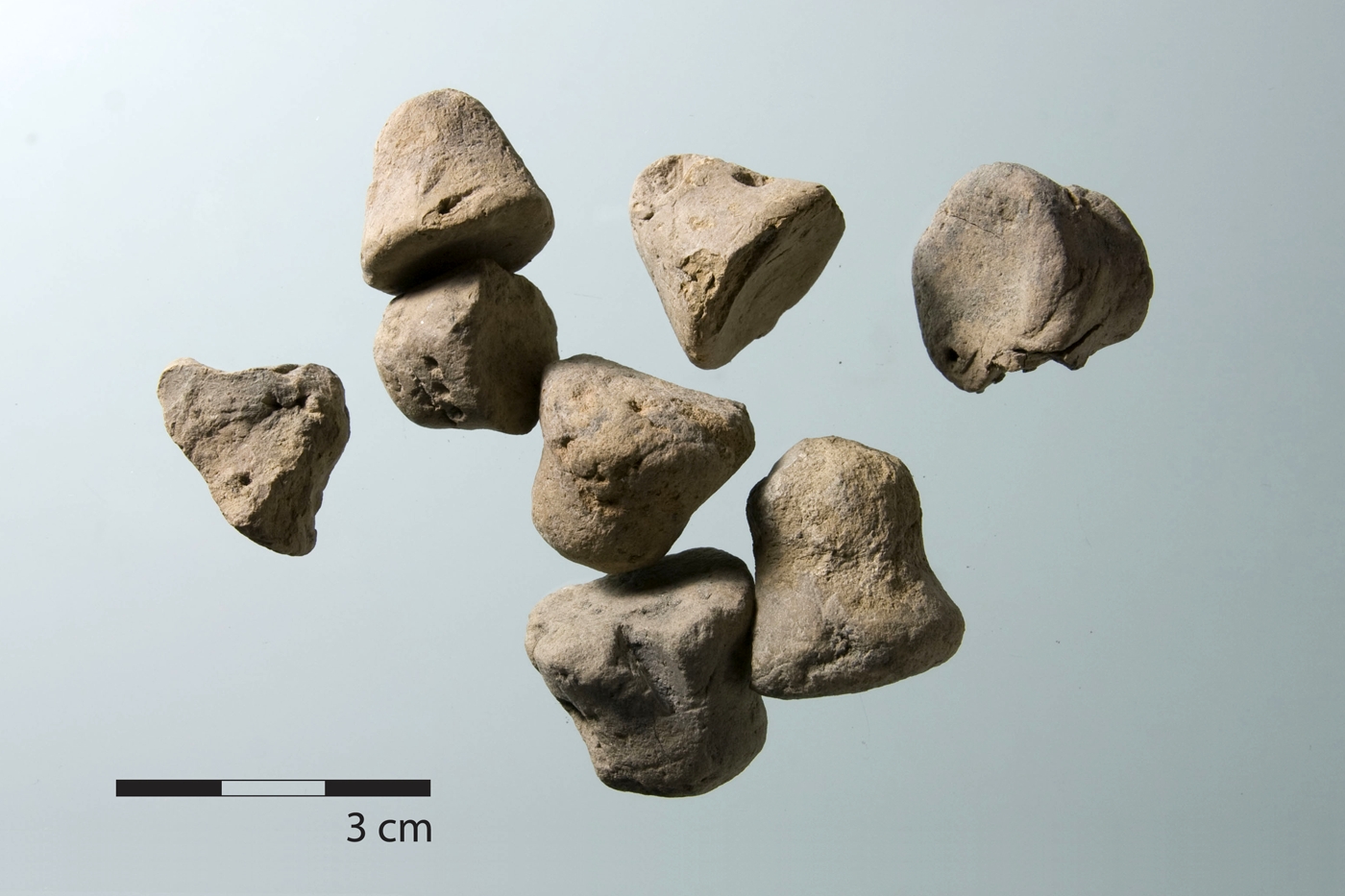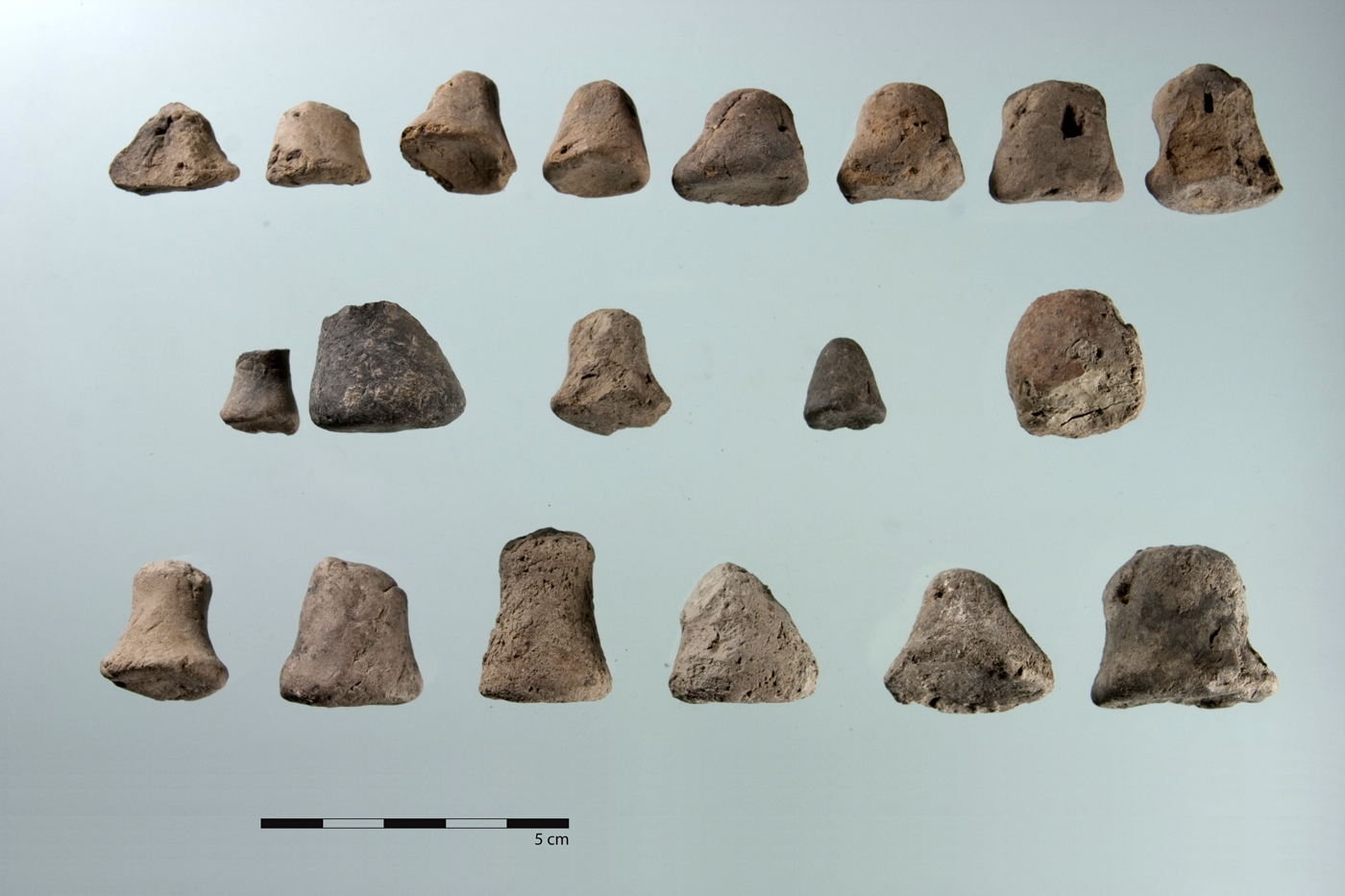Tokens
Tokens are small, geometrical clay objects in various shapes. Approximately 400 tokens were recovered during excavations, almost exclusively from Aeneolithic layers. Many were found in ashy layers and are made of unfired or only lightly baked clay. Most of the tokens seem to have been produced in a quite speedy and careless manner, although a few more elaborated pieces are present. The low degree of fragmentation and the absence of use-wear traces point to a relatively short use-life of the tokens and suggest that they were discarded immediately after use.
The tokens from Monjukli Depe can be divided into five groups according to shape: disc-shaped, spherical, conical, cylindrical, and squat. Those basic shapes could then undergo a series of modifications such as pinching, punctures, incisions, or impressions. More than one-third of the tokens showed at least one of those secondary modifications. This leads to the production of tokens of relatively diverse appearance, of which the most frequent are:
- small discs with convex surfaces
- pyramidal tokens
- squat conical tokens with rounded top
- slender conical tokens with rounded top
- conical tokens with punctures
- conical tokens with pinches in the shape of a crown.
The very large number of tokens found at the site has no parallels on the northern side of the Kopet Dag. Similar clay objects occur sporadically in some settlements in the region but, with the exception of Monjukli Depe, seem to be an exclusively Neolithic phenomenon. Parallels in shape and quantity can be found further west in the Iranian highlands, especially at Tappeh Khaleseh and Zagheh. The scarcity of tokens at contemporary sites is likely due to differences in the excavation strategies and taphonomic processes at work.
The functions and meanings behind these small clay objects remain uncertain. Archaeologists tend to understand tokens as counting devices associated with economic activities. A multiplicity of other uses can, however, be taken into consideration, for instance as gaming pieces, mnemonic devices, figurines, sling balls, or ornaments.
The contexts in which tokens were found in Monjukli Depe do not offer much information on how those objects were used. A function as counters seems improbable in view of the ambiguity of shape categories. The punctures and incisions may point to "magical" practices that may have been performed with the figural tokens. Interestingly, those modifications are either rare or completely absent on the prehistoric tokens from sites in the Iranian highlands, suggesting that we are dealing here with very localized practices.
For further reading, see Daitche in Pollock et al. (eds.) 2019.






